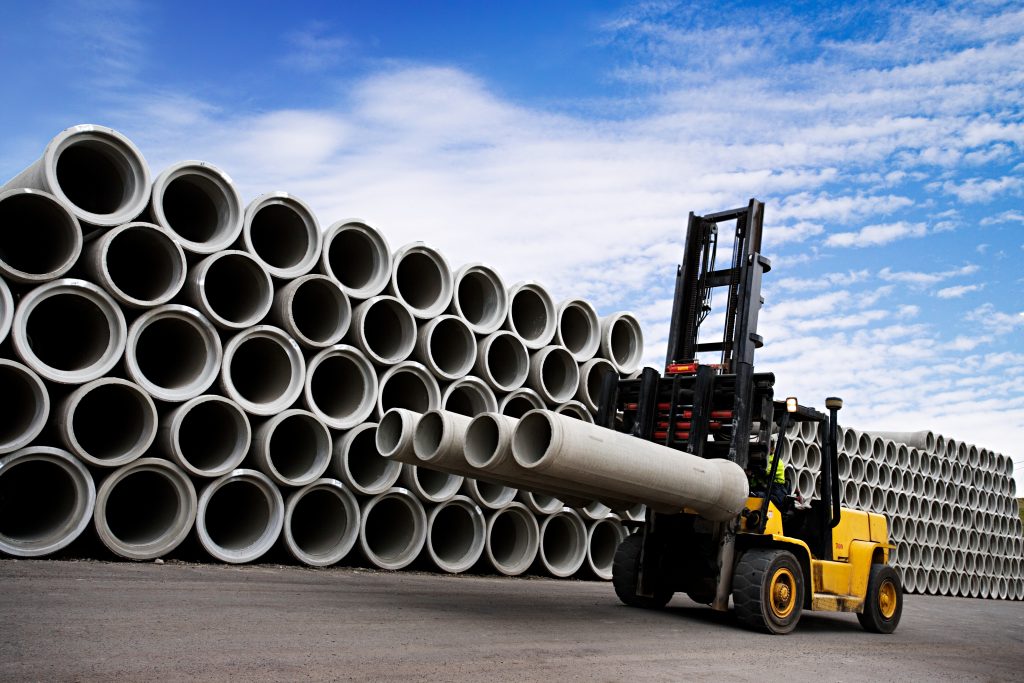Stormwater networks and underground utilities depend on reliable conveyance. For decades, reinforced concrete pipe (RCP) has set the standard, delivering structural integrity, predictable service life, and compliance with state and national guidelines. While new materials such as lightweight plastics are sometimes considered, municipalities, contractors, and engineers continue to select RCP for critical applications—because strength, resilience, and long term performance matter most.
What Makes Reinforced Concrete Pipe Different
At its core, RCP is a precast, cylindrical pipe strengthened with steel. Unlike plastic pipe, it does not depend on soil compaction for support; instead, it carries live and dead loads on its own. This independence makes it the preferred solution for storm drains, culverts, sewer systems, and detention facilities where traffic loading and hydraulic performance are non-negotiable.
Because it is manufactured to consistent standards, RCP offers durability in conditions that degrade alternatives. It resists UV exposure, fire, and chemical attack, while also maintaining flow capacity through decades of operation.
Cost and Sizing Considerations
Every project begins with budgeting. Contractors often compare rcp pipe price, rcp pipe cost, or rcp pipe cost per foot when preparing estimates. Prices change with pipe size, wall thickness, and load class, so selecting the right product requires more than just the lowest number.
- A 12 inch reinforced concrete pipe (RCP) might be specified for residential drainage, where the 12 inch RCP cost remains affordable.
- Larger diameters, such as 15 inch, 18 inch, and 24 inch reinforced concrete pipe (RCP), naturally rise in price due to additional material and reinforcement.
- Engineers consult resources like an RCP thickness chart to confirm whether 12 inch reinforced concrete pipe (RCP) wall thickness or heavier walls for higher load classes fit site conditions.
This clarity helps owners balance up-front costs against performance needs.
Load Classes and Structural Performance
RCP is governed by ASTM C76, which defines Classes I through V. These classifications tell engineers how much strength is built into the pipe wall. For example:
- Class I–II may be appropriate for shallow cover in light-traffic areas.
- Class III–IV suit deeper burial or heavier live loads.
- Class V represents the most robust choice, with maximum wall thickness to withstand trucks, highways, or industrial settings.
Selecting the wrong class risks cracking, settlement, or early replacement. By contrast, matching load class to conditions ensures decades of reliable service.
The Role of Joints in Hydraulic Performance
A pipe’s strength comes from its wall, but its water-tightness comes from the joints. Poorly sealed joints can leak, wash out soils, and create sinkholes. Modern designs—tongue-and-groove or gasketed joints—prevent this, maintaining a watertight connection throughout the drainage system.
Contractors often specify tested joint systems from an RCP pipe manufacturer or RCP pipe suppliers that meet ASTM and DOT requirements. Properly designed joints reduce infiltration, maintain flow capacity, and keep infrastructure safe.
Certification and Quality Assurance
Not every pipe supplier delivers the same standard. Verifying compliance with PennDOT class A concrete, PennDOT concrete mix designs, and listings such as PennDOT Bulletin 15 approved products and approved construction materials ensures that pipes meet state expectations.
Equally important is working with an NPCA certified plant. NPCA certification requires documented inspection processes that confirm every unit meets dimensional and strength requirements. Contractors searching for “rcp pipe near me” or “rcp pipe suppliers near me” know to check for NPCA and DOT approval to avoid delays and costly rejections.
Applications Across Infrastructure
Reinforced concrete pipe integrates seamlessly into nearly every type of underground network:
- Storm drains that carry runoff away from communities.
- Culverts that channel water beneath highways and railroads.
- Sewer systems designed for continuous, high-capacity use.
- Detention systems that regulate storage and release during storms.
Its versatility allows it to tie directly into precast manholes, catch basins, and outlet structures, ensuring complete and unified drainage solutions.
Why Contractors Still Choose Concrete Pipe
While lightweight alternatives can be easier to handle on-site, they depend on flawless installation. Poor compaction can lead to collapse, reducing lifespan dramatically. By contrast, RCP brings built-in structural strength that safeguards municipalities from unexpected failures.
Its ability to withstand freeze-thaw cycles, corrosive soils, and heavy live loads continues to make it the benchmark product. For engineers planning public works and for contractors responsible for safety, RCP delivers the balance of durability and economy that no substitute can match.

